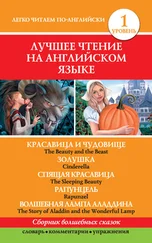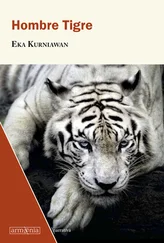“That’s certainly enough to fight a pig invasion,” replied Tino Sidiq, petting one of the dogs.
“Next week we will move to the front.”
The pig extermination had begun four or five years ago, with a farmer named Sahudi and his five friends: their rice paddies and fields at the foot of Ma Iyang Hill had been ravaged by wild boars for a month. As harvest time approached, Sahudi’s little child, who was only seven, spotted a pig in the yard behind the house. Sahudi had had it. He quickly gathered up his friends and prepared for an ambush.
They chose the night of the full moon. The six men sat in silent pairs in the guava, sapodilla, and ambarella trees, each one of them in their own corner of the field with an air rifle in their hands. They waited patiently, the tips of their cigarettes glowing in the dark, determined to shoot the first pig they saw. Right before dawn, they finally heard some snorts and snuffles. In a number of minutes the animal appeared under the light of the full moon — and not just one, but two of them set upon the fertile fields of beans and corn.
Sahudi quickly snatched up his rifle and aimed at one of the pigs, clearly visible in the light of the moon, and as he fired three more rifles simultaneously shot at the same pig, which collapsed in the dirt, three bullet holes right at its temple. The other men tried to shoot the second pig, but it escaped; at the sound of the rifle shots and the sight of its partner collapsed on the ground, the second pig ran away, crashing into everything in its path.
The six men leapt down from their perches in the trees, and seeing that the shot pig was not yet dead, Sahudi stabbed a wooden stake into its heart with all his might, releasing its soul for good. But something was happening to that carcass under the light of the moon: those six men could hardly believe their eyes — its black hairy body that was covered in mud suddenly turned into a human corpse, with three bullets wounds to his head and a stake stuck in his chest.
“Holy shit!” said Sahudi. “This pig turned into a person!”
The news quickly spread from one village to the next, until all of Halimunda had heard about it. No one recognized the dead man and no one claimed his corpse, so it rotted away in the city morgue before being buried in the public cemetery. Since then, no one had dared to kill any pigs, terrified of the same curse that had befallen Sahudi and his five friends: they all went insane. Four years had passed without anyone killing any pigs, even though the animals had now become the most vicious marauders. The farmers’ only hope was the arrival of the military. Major Sadrah had already sent a number of soldiers to the forest; they had come home carrying wild fowl and rabbits to cook for their supper, but no pigs. Major Sadrah finally sent a courier to ask Shodancho for his help, knowing full well that the man was the only one he could rely on.
The people were looking forward to Shodancho’s arrival. Just as they’d done ten years before, they lined up along the road waving handkerchiefs and little flags, hoping to see their long-absent hero. Little kids stood in front, intrigued by this figure their fathers and mothers and grandfathers and grandmothers had told them so many stories about. The revolutionary war veterans were also there, dressed in full uniform as if it were Independence Day. The regular soldiers gave him a salute by shooting off cannons over the beach, and schoolchildren celebrated with their drum bands.
Shodancho finally appeared, this time not riding a mule but walking on foot. He was wearing loose-fitting clothes with his hair in a buzz cut; his body was as skinny as ever, and he looked more like a Buddhist monk than a soldier. He was guarded by his thirty-two men, who remained faithful even after being tortured with heavy physical training for a week in his efforts to make them lose some weight for the occasion. Then there were ninety-six additional soldiers: some gray, some white, and some brown, the ajak trotted behind him, excited to get such an extraordinary welcome from the people of the city. Major Sadrah greeted his friend himself.
After embracing Sadrah, who had developed a sizable potbelly that made him look like a pregnant woman, Shodancho joked cruelly to the crowd, “It seems that I have already caught a pig! Believe me, these dogs are going to come in handy.”
The group stayed in Shodancho’s old headquarters, which since the Japanese era had been left unoccupied out of respect. The next day, just as he had promised, without very much rest, they began the epic hunt. Each soldier minded three dogs, while Shodancho led them all with a rifle and dagger. They didn’t lie in wait, as Sahudi and his friends had done, but clambered through the jungle brush where the pigs were nesting. These large beasts, awoken from their naps, jumped up and ran this way and that.
That day they were able to catch twenty-six pigs, the next day twenty-one, and on the third day seventeen, making a noticeable dent in the swine population. Some were killed by rifle shots, while others were gathered alive in a very large makeshift pen in the soccer field near the shodan headquarters. The weird thing was that out of all of those pigs that were killed, not one of them turned into a human. They were truly just plain old pigs, with tusks and snouts and black-bristled skin covered in mud. This emboldened the farmers to join in the pig hunt on the fourth day, and from that point forward, hunting pigs from harvest time until planting time became an annual tradition.
Shodancho’s men threw the slaughtered pigs into Chinese restaurant kitchens, while those kept alive were prepared for pig fights to be held in celebration of their triumphant victory. The pigs would be paired with ajak in an arena, and the entertainment-starved citizens of Halimunda eagerly anticipated the event. Shodancho had his soldiers create an arena in the soccer field, constructed out of boards about three-meters tall arranged into a large circle. On the outside perimeter, at a height of about two meters, they built a sturdy platform, buttressed by crisscrossed bamboo, where the spectators could stand. To reach the platform, the people had to climb up steps guarded by two soldiers who acted as the ticket collectors, and the tickets could be purchased from a pretty girl sitting behind a nearby table.
The pig fights started on a Sunday afternoon, two weeks after Shodancho had arrived. They lasted for six days, until every single pig had been killed and tossed into restaurant kitchens. From the farthest corners of the city and beyond, spectators came and lined up in front of the pretty ticket seller. Those who wanted to watch but couldn’t afford to pay scrambled up the coconut trees that grew all around the soccer field, and sat in the branches. Their colorful clothes looked strange from a distance, as if coconuts no longer grew in the familiar shades of green and brown.
The pig fights were very entertaining. The ajak that Shodancho hadn’t quite domesticated still showed a wild ferocity when ganging up on the wild pigs. One pig had to face five or six ajak , which of course wasn’t fair, but everyone wanted to know for sure that the pig was going to die — they didn’t want a battle, but a massacre. If the pig tried to take on one of the dogs, the rest of the pack attacked, biting into the swine’s flesh and tearing it apart. When the pig began to look exhausted, a soldier would douse it with a bucketful of cold water, forcing it to perk up for the next onslaught. The outcome of each and every performance was obvious: the pig would die, and one or two of the ajak would have minor injuries. Then a new pig would be put into the arena, and six fresh ajak would be ready to tear it to pieces. All the spectators seemed content to watch this brutal show, except Shodancho, who was suddenly captivated by an entirely different sight.
Читать дальше











